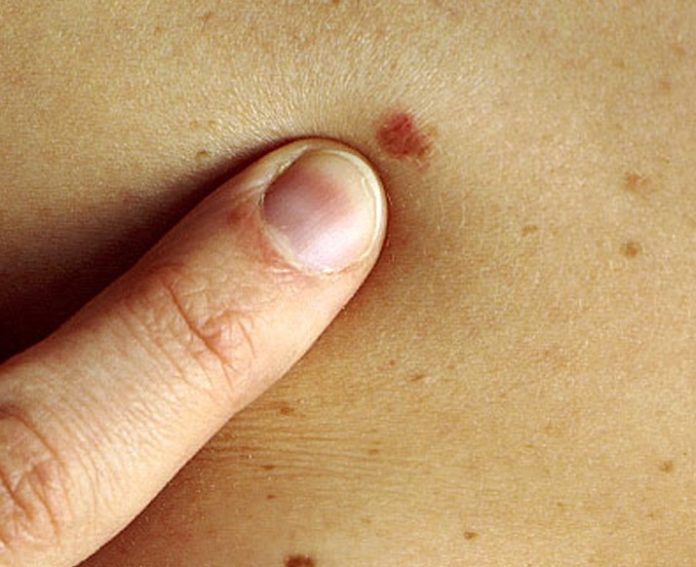
What are the Benefits of a Skin Cancer Self-Check?
Avoiding disfiguration and death are the goals of early detection. The deeper a skin cancer, the longer it has been growing, the more difficult it is to treat and the greater likelihood it has spread. By giving all parts of your body a regular check you may be able to detect the early signs of skin cancer and increase the likelihood of successful treatment.
But there are also more subtle benefits to regular self-screening for skin cancer. The self check process takes time. By devoting the necessary time to the process you stay aware of the dangers of skin cancer. As a result, you will be more likely to apply and re-apply sunscreens as appropriate, avoid the use of tanning beds, and take other steps to protect your skin from solar exposure. You benefit from preventing skin cancer before it can get started.
In terms of evidence, there is some evidence for the benefit of a skin cancer self-check & it is recommended in Australian Guidelines though not guidelines from The USA.
What are The Risks of a Skin Cancer Self-Check?
Most skin cancers are not pigmented (dark) and it requires dermoscopy to diagnose an early BCC or SCC.
Melanoma needs to be diagnosed early. The early signs of melanoma are subtle & require dermoscopy. Uncommon forms of melanoma such as amelanotic and desmoplastic types do not adhere to the usual ABCDE signs of melanoma and would probably be missed in a self-exam.
Melanoma detected at a routine skin check is thinner ompared with those detected by other means.
One of the risks of relying exclusively on self-checks for skin cancer screening is that you can’t identify it if you can’t see it. Our bodies have many bits that are difficult to see without a mirror. This includes not only your back, but the back of your neck, the top of your head, behind your ears, etc. Cancers that arise in these areas may go undetected because you can’t easily see them when you inspect yourself.
Another risk is that self-screenings may not be performed regularly. A study of at risk patients in Italy showed that less than 30% performed skin self screening on a regular basis.
In addition, self-checks can encourage people to take a wait-and-see approach that gives the cancer more time to spread.
What is the best way to do a skin check?
You can do a monthly head to toe skin check using a Mirror or your partner. A phone camera is fine for getting an idea as to whether a lesion is new or growing, but don’t rely on it. The back and top of the scalp & ears are very common places for skin cancers.
The self-check itself can use either the ABCDE or SCAN your skin.
Using SCAN
This acronym focuses on fewer characteristics of moles and is better at picking up non-melanomas. It is also a bit easier to remember.
Sore – Does the spot itch or is it sore? Has it taken more than 6 weeks to heal?
Changing – This is like “evolution” and the question is has it changed in size, color, or appearance?
Abnormal – Does the mole appear to be different from other moles you have? Just like the ugly duckling in the childhood story stood out from the rest of the flock, check for any growths that are not consistent with others in the area.
New – Did it just appear? While melanomas may evolve, they frequently appear as a new growth.
Other Warning Signs. Redness, pain, swelling, tenderness, bleeding, oozing or a scaly appearance can all be signs of skin cancer.
Using ABCDE
This acronym is to remind you what to look for when performing a skin cancer check. Each letter represents a certain characteristic you should use to evaluate each mole, growth, or freckle on your body. As you perform your check, ask these questions.
Asymmetry – Do both sides of the growth appear to be symmetrical? If one side does not look like the other, it may be cancer. Melanomas do not grow in a symmetrical fashion.
Border – Are the edges (border) irregular, notched or ragged in appearance? These are all warning signs of skin cancer.
Color – Is the color uniform or does it appear to have several colors? Does it have a mottled appearance? A harmless growth may be any of several different colors, but no matter the color, it is usually only one color.
Diameter – Is it greater than 6mm (1/4 of an inch)? Harmless growths are usually smaller than a pencil eraser.
Evolution – Has the mole or growth grown or changed in any manner since you last looked? If you see changes to color, size, symmetry or the edges, you need to immediately seek the services of a medical professional.
What is the Role of a Skin Cancer Clinic?
Clearly, there is not a one size fits all approach to skin cancer screening. You can’t rely solely on self-exams nor can you have a physician inspect your entire body once a month for changes.
This is why skin cancer doctors play such a vital role in skin cancer screenings. The professionals at a skin cancer clinic are trained in the methods of physician directed total body skin exams. They are more likely to detect melanomas at a thinner stage than either the patient or the patient’s spouse or partner. In addition, most melanomas detected are not presented as a concern.
A skin cancer clinic should be your partner for detecting, diagnosing, treating, and on-going management of skin cancers. A skin cancer clinic can usually provide these services in a primary care skin cancer setting.
